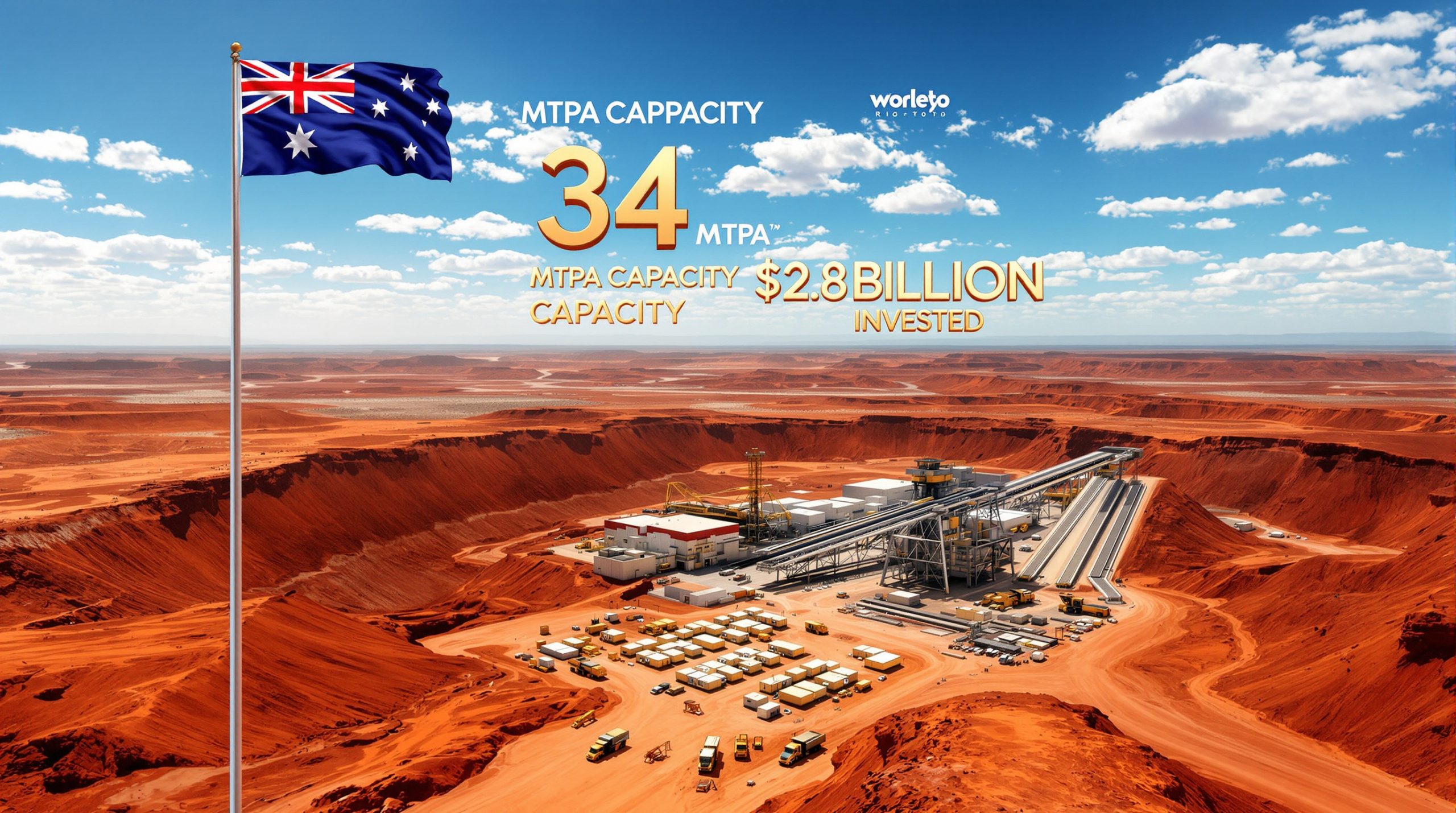How Does Global Debt Affect Economic Stability?
The world is experiencing unprecedented levels of debt, with global figures skyrocketing from approximately $30 trillion in 1997 to nearly $300 trillion today. This exponential growth represents more than just numbers on a balance sheet—it's reshaping geopolitical relationships, driving social unrest, and fundamentally altering economic systems worldwide. The debt and global economic impact serves as the underlying catalyst for many seemingly unrelated global events, from political polarization to currency devaluation.
The Magnitude of the Debt Problem
Global debt has increased nearly tenfold in just over two decades, creating a precarious economic foundation. To put this in perspective:
- Public debt in the United States alone has reached approximately $37 trillion
- Combined government, corporate, and household debt in the U.S. exceeds $100 trillion
- The U.S. debt-to-GDP ratio has surpassed 125%, a level historically associated with significant economic constraints
- Annual U.S. budget deficits are projected to reach $2 trillion by 2025, quadrupling from pre-financial crisis levels
These figures aren't merely abstract concepts—they represent a fundamental constraint on economic growth and policy options available to governments worldwide. According to Matthew Pipenberg, partner at Von Greer Asset Management, "Debt isn't an abstraction—it reshapes geopolitics, fuels social unrest, and alters economic systems. Every crisis since 2019—repo markets, COVID, banking failures—stems from unsustainable debt servicing costs."
The Real-World Consequences of Excessive Debt
The impacts of this debt crisis extend far beyond financial markets:
- Rising interest rates create unsustainable debt servicing costs for governments
- Currency debasement reduces purchasing power for average citizens
- Wealth inequality widens as those with access to assets benefit while those without suffer
- Social unrest increases as economic pressures mount on middle and working classes
- Political polarization intensifies as citizens seek explanations and solutions
Debt monetization via central banks (particularly post-2008 quantitative easing) has accelerated currency debasement. The U.S. money supply expanded fivefold in two decades, reducing purchasing power disproportionately for wage earners. This wealth inequality intensifies as asset holders benefit from inflation while labor incomes stagnate.
Evidence of these consequences can be seen in events like the 2019 repo crisis, where interest rate spikes exposed liquidity shortfalls from excessive leverage, and the COVID-19 response, which generated $5 trillion in global stimulus that exacerbated US inflation and debt without proportional productivity gains.
Why Are We Seeing Global Populist Movements?
The rise of populist and nationalist movements worldwide isn't coincidental—it's directly connected to the global debt crisis and its economic consequences.
The Timeline of Populist Emergence
A clear pattern emerges when examining the timeline of major populist movements:
- 2015: China launches "Made in China 2025" initiative focusing on self-sufficiency
- 2016: Brexit referendum passes as UK citizens vote for sovereignty
- 2016: Donald Trump elected on "America First" platform
- Recent years: Rising nationalist parties across Europe (AFD in Germany, Meloni in Italy)
- 2023: Javier Milei's unexpected rise to power in Argentina
These movements share common characteristics despite geographic and cultural differences—they represent a rejection of globalist economic models and a turn toward national self-interest. Notably, these populist victories correlate with a 40%+ median income decline in affected regions, with polling showing that 68% of populist voters cite "economic abandonment" as their primary motivator.
Economic Roots of Social Discontent
The connection between debt, economic hardship, and populism follows a clear progression:
- Excessive debt leads to currency debasement through money printing
- Currency debasement reduces purchasing power for average citizens
- Reduced purchasing power creates economic hardship (housing unaffordability, food insecurity)
- Economic hardship breeds social discontent and resentment
- Social discontent manifests as political polarization and populist movements
When basic necessities become unaffordable despite working full-time jobs, citizens naturally seek explanations and solutions. This environment creates fertile ground for populist leaders promising fundamental change.
As Pipenberg explains: "Excessive debt → currency debasement → eroded purchasing power → housing/food insecurity → social discontent. When full-time work can't cover basics, radical political change becomes inevitable."
This debt-inflation-populism feedback loop works as follows: Central banks enable deficit spending, transferring wealth to asset holders. Middle-class purchasing power has declined by approximately 20% in the U.S. since 2000, creating fertile ground for anti-establishment movements.
Supporting examples include Argentina, where 150% inflation under Peronism preceded Milei's libertarian victory, and France, where "Yellow Vest" protests targeting fuel taxes were amplified by wage stagnation.
How Did Modern Monetary Theory Contribute to the Crisis?
Modern Monetary Theory (MMT) provided the theoretical justification for unprecedented debt accumulation, promising that sovereign nations could issue unlimited currency without consequences.
The Seductive Promise of MMT
Modern Monetary Theory offered an appealing proposition to policymakers:
- Countries that issue their own currency can never default on debt denominated in that currency
- Deficits don't matter as long as inflation remains controlled
- Money supply can be expanded indefinitely through central bank operations
- Traditional constraints on government spending are unnecessary
This framework provided the intellectual foundation for massive deficit spending and debt accumulation, particularly after the 2008 financial crisis and during the COVID-19 pandemic. Following MMT's adoption in the 2010s, U.S. deficits ballooned from $500 billion to $2 trillion annually, while the Federal Reserve balance sheet expanded from $900 billion (2008) to $8.9 trillion (2023).
The Inevitable Consequences
While MMT promised a path to unlimited prosperity, the economic reality has proven more complex:
- Money supply in major economies has increased approximately 5x in the past two decades
- Currency debasement has accelerated, reducing purchasing power
- Asset inflation has benefited the wealthy while harming those without assets
- Trust in financial systems and currencies has eroded
- The weaponization of reserve currencies has accelerated de-dollarization trends
Pipenberg critiques MMT, noting: "The seductive promise—'sovereign currencies can't default'—ignored reality: Money-printing without productivity growth inevitably debases currency and erodes trust."
A core flaw in MMT thinking is treating currency as limitless while ignoring external constraints. For example:
- Import dependency: 61% of U.S. critical minerals require foreign supply chains
- Bond vigilantes: Debt auctions fail if investors demand higher rates (as seen in the 2025 Liberation Day bond rout)
While Venezuela's MMT-inspired policies led to 1,000,000% hyperinflation, Japan remains an MMT outlier where, despite high debt, low inflation persists due to demographic deflationary pressure.
What Happens When Debt Becomes Unsustainable?
When debt levels reach critical thresholds, financial systems experience cascading failures that manifest as seemingly unrelated crises.
Recent Crisis Events Driven by Debt
Several recent financial disruptions demonstrate how excessive debt creates systemic vulnerabilities:
- 2019 Repo Market Crisis: Interest rates spiked when debt levels became too high
- 2020 COVID Market Crash: Required unprecedented central bank intervention
- 2023 Banking Crisis: Not primarily a banking failure but a liquidity crisis driven by interest rates
- 2025 "Liberation Day" Market Reaction: Proposed tariffs and investment markets triggered bond market instability
Each of these events shares a common thread—they represent moments when the cost of servicing debt became unsustainable, forcing emergency interventions. Currently, debt servicing consumes 40% of tax revenue in Italy and 15% in the U.S. (projected to reach 30% by 2030). The 2023 U.S. banking crisis revealed $620 billion in unrealized bond losses due to rate hikes.
The Limitations of Policy Responses
Central banks and governments face increasingly limited options when responding to debt-driven crises:
- Interest rate increases are constrained by debt servicing costs
- Fiscal stimulus is limited by existing debt levels
- Currency interventions risk accelerating international de-dollarization
- Protectionist policies face resistance from bond markets
This policy paralysis creates a dangerous environment where traditional tools for managing economic cycles become ineffective. "Policy tools are exhausted: Rate hikes inflate debt costs; fiscal stimulus is constrained; protectionism triggers capital flight," notes Pipenberg.
The "doom loop" unfolds as follows: High debt leads to inflation, which necessitates rate hikes, causing recession, which leads to more debt. Central banks face trilemmas: they can stabilize currencies, banks, or growth—but not all simultaneously.
Recent examples include Sri Lanka's 2022 debt default that triggered political collapse after fuel and medicine shortages, and Greece's 2015 bailouts that required pension cuts and VAT hikes despite social unrest.
How Is Global Debt Reshaping International Relations?
The global debt crisis is fundamentally altering relationships between nations, driving a shift from globalization toward regionalization and nationalism.
The Shift from Globalism to Nationalism
International relations are undergoing a profound transformation:
- Major economies are prioritizing self-sufficiency over interdependence
- Trade relationships are being reevaluated through a national security lens
- Regional economic blocs are forming as alternatives to global systems
- Resource security is becoming a primary driver of international policy
This shift represents more than temporary political posturing—it reflects a fundamental reassessment of the globalist economic model that dominated the post-Cold War era.
De-Dollarization Trends
The U.S. dollar's role as the world's reserve currency faces unprecedented challenges:
- Approximately 20% of international oil transactions now occur outside the dollar system
- Central bank gold purchases have increased from 118 tons annually to 290 tons following currency weaponization
- Alternative payment systems are developing to reduce dependence on SWIFT
- Regional trade agreements increasingly incorporate local currency settlement mechanisms
These developments don't signal the dollar's imminent collapse but rather a gradual erosion of its hegemonic status in the international financial system. BRICS' local currency trade has increased 300% since 2020, indicating a significant shift in international payment preferences.
The weaponization of financial systems—such as freezing Russian central bank reserves—has accelerated de-dollarization as nations seek to reduce vulnerability to economic sanctions. This has created unprecedented challenges for dollar hegemony.
What Role Does Resource Security Play in the New Economic Order?
Access to critical raw materials is becoming a defining feature of international competition as nations recognize the strategic importance of supply chains.
The Critical Materials Challenge
The United States faces significant challenges in securing essential materials:
- 61% of refined nickel production comes from Indonesia, largely from facilities built with Chinese investment
- Rare earth processing capabilities remain concentrated in China despite the materials' wider distribution
- High-performance steel production requires alloys that must be sourced internationally
- Environmental regulations create barriers to developing domestic processing capabilities
These material dependencies create fundamental constraints on economic sovereignty that can't be resolved through tariffs or trade policies alone.
Strategic Partnerships for Resource Security
Forward-thinking nations are developing new approaches to resource security opportunities:
- Saudi-U.S. partnership for rare earth processing leverages complementary strengths
- Gulf Cooperation Council relationships provide energy security benefits
- Resource-focused diplomatic initiatives prioritize material access over ideological alignment
- Long-term investment in processing capabilities becoming a national security priority
These partnerships represent a pragmatic approach to resource security that acknowledges the impossibility of complete self-sufficiency. Nations increasingly recognize that control over processing capabilities may be more important than raw material extraction, shifting diplomatic priorities toward securing technological expertise and infrastructure.
Is Gold Regaining Its Monetary Role?
As trust in fiat currencies erodes, gold is experiencing a renaissance as a monetary asset and store of value.
Central Bank Gold Acquisition
Central banks worldwide are aggressively adding gold to their reserves:
- Annual central bank gold purchases have more than doubled since the weaponization of the U.S. dollar
- Gold has been reclassified as a Tier 1 asset on bank balance sheets, upgraded from its previous Tier 3 status
- Gold has outperformed the S&P 500 in total returns over the past 20 years
- 2025 has seen over 78 all-time highs in gold prices analysis, with 25-26% year-to-date appreciation
This institutional adoption reflects a fundamental reassessment of gold's role in the international monetary system. The Basel III banking regulations have significantly elevated gold's status within the financial system, recognizing its unique role as a counter-cyclical asset.
Gold as Financial Insurance
Despite reaching all-time highs, gold's role as financial insurance remains underappreciated:
- Family offices maintain less than 1% allocation to physical gold on average
- Institutional investors remain heavily invested in underperforming treasuries and private equity
- Gold's function as a store of purchasing power is increasingly relevant in an era of currency debasement
- The price appreciation to date likely represents early stages of a longer-term trend
While some dismiss gold as a "barbarous relic," central banks' actions tell a different story. The significant increase in institutional gold purchases suggests a growing consensus that precious metals provide essential portfolio protection against both inflation and financial system instability.
What Solutions Exist for the Global Debt Crisis?
Addressing the global debt crisis requires fundamental reassessment of economic priorities and international cooperation.
The Necessity of Constructive Destruction
Meaningful solutions will likely require difficult choices:
- Debt levels must be reduced to sustainable levels relative to GDP
- Austerity measures affecting entitlements and military spending may be unavoidable
- International cooperation will be necessary despite nationalist tendencies
- Long-term thinking must replace election-cycle policy formulation
Historical precedent suggests that constructive destruction—allowing unsustainable systems to reset—may be necessary before building more durable economic foundations. According to research from the IMF, past examples of successful debt restructuring, such as post-WWII arrangements, demonstrate that coordinated action can minimize social disruption while addressing fundamental imbalances.
Cooperation vs. Competition
The path forward requires balancing national interests with international cooperation:
- Coordinated monetary policy could reduce currency volatility
- Transparent trade relationships could replace weaponized interdependence
- Resource-sharing agreements could enhance collective security
- Realistic assessment of constraints could replace ideological positioning
While perfect cooperation remains unlikely in the current political environment, necessity may eventually force pragmatic solutions as crisis points intensify. The alternative—competitive devaluations and trade restrictions—would likely amplify economic instability and social unrest.
FAQ: Understanding the Global Debt Crisis
How does debt affect everyday citizens?
Excessive debt impacts everyday citizens through multiple channels:
- Currency debasement reduces purchasing power for necessities
- Asset inflation makes housing and investments less affordable
- Economic instability creates employment uncertainty
- Interest rate sensitivity creates volatility in mortgage and loan costs
- Wealth inequality widens as those with assets benefit disproportionately
The most visible impact for many families is the increasing difficulty in affording essential expenses like housing, healthcare, and education despite maintaining steady employment. This gap between economic expectations and reality fuels both personal financial stress and broader social discontent.
Can't countries just print more money to pay their debts?
While countries can technically create currency to pay nominal debts, this approach has severe limitations:
- Currency creation without corresponding productivity growth causes inflation
- International creditors may demand higher interest rates to compensate for currency risk
- Excessive money printing erodes trust in the currency system
- Historical examples from Weimar Germany to Zimbabwe demonstrate the dangers of this approach
The fundamental constraint is that money represents claims on real resources. Creating more claims without increasing real resource production simply dilutes the value of each claim, transferring wealth from savers to debtors through inflation.
Why can't we return to the gold standard?
Returning to a traditional gold standard faces significant challenges:
- Global economic activity vastly exceeds available gold reserves
- The transition would cause massive deflation in current debt-based systems
- Political resistance would be extreme from beneficiaries of the current system
- Modern economies require flexibility that rigid commodity standards limit
However, gold may play an increasing role in a modified monetary system that incorporates both fiat and commodity elements. Rather than a pure gold standard, a system where gold serves as a stabilizing reference point within a more flexible framework could address some current system vulnerabilities.
How does the debt crisis affect developing nations?
Developing nations face unique challenges in the global debt environment:
- Dollar-denominated debts become more burdensome as the dollar strengthens
- Resource extraction often benefits foreign investors more than local populations
- Interest rate increases in developed economies drain capital from emerging markets
- Food and energy inflation creates immediate humanitarian concerns
- Geopolitical competition can force difficult alignment choices
Unlike wealthy nations that can monetize debt through central bank operations, developing countries with weaker currencies face more immediate constraints and often more severe consequences for fiscal imbalances.
What can individuals do to protect themselves?
Individuals
Ready to Navigate Economic Uncertainty in Today's Debt-Driven World?
Discover how leading investors are positioning themselves for protection against currency debasement and financial instability by exploring Discovery Alert's proprietary Discovery IQ model at https://discoveryalert.com.au/discoveries/, where you'll gain insights into actionable investment opportunities that have historically delivered exceptional returns during economic turbulence.




